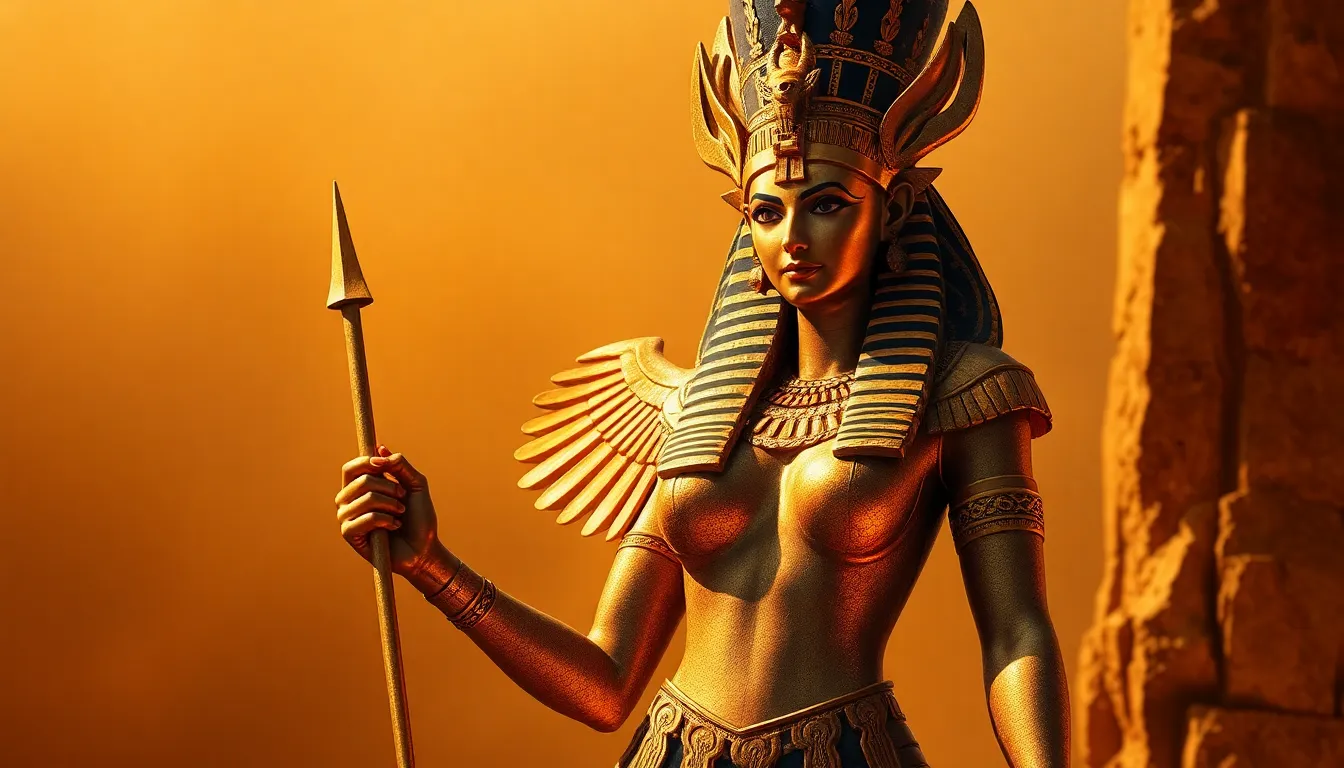The Role of the Goddess Hathor in Egyptian Mythology
I. Introduction
Egyptian mythology is a rich tapestry of gods, goddesses, and beliefs that shaped the culture and spirituality of ancient Egypt. Within this intricate pantheon, Hathor stands out as one of the most significant deities, embodying multiple aspects of life, love, and the afterlife. This article aims to explore the multifaceted role of Hathor, examining her origins, symbolism, associations, and her lasting impact on both ancient Egyptian society and modern culture.
II. Origins and Etymology of Hathor
Hathor’s worship has roots deep in ancient Egyptian history, with evidence of her veneration dating back to the Old Kingdom (circa 2686–2181 BCE). She was primarily worshipped as a goddess of music, dance, joy, and love, but her role expanded over the centuries to include motherhood and fertility.
The name “Hathor” is derived from the ancient Egyptian phrase “Hwt-Hor,” meaning “The House of Horus.” This name signifies her connection to the sky and the divine, reflecting her role as a nurturing goddess and protector of the pharaohs.
Archaeological findings, such as inscriptions and statues, depict Hathor in various forms, showcasing her evolution and importance throughout different dynasties. Early representations often show her as a cow or a woman with cow horns, symbolizing her nurturing and maternal qualities.
III. Iconography and Symbols Associated with Hathor
Hathor is commonly represented in art and sculpture with distinct iconography. Some of her most recognizable representations include:
- A woman with cow horns encircling a sun disk
- A cow, emphasizing her nurturing and protective nature
- A woman playing the sistrum, a musical instrument associated with joy and celebration
Key symbols linked to Hathor include:
- Cow: Represents fertility, motherhood, and nourishment.
- Sistrum: A musical instrument that symbolizes joy and the power of music in worship and celebration.
- Mirror: Associated with beauty, femininity, and the protective gaze of the goddess.
Hathor’s physical attributes, such as her beauty and nurturing demeanor, reflect her dual nature as both a goddess of love and a protective mother.
IV. Hathor as the Goddess of Love and Joy
As the goddess of love and joy, Hathor played a significant role in the romantic lives of ancient Egyptians. She was often invoked in matters of the heart, and her presence was believed to bless relationships and marriages.
Hathor’s connection to music, dance, and festivities reinforces her status as a deity of joy. She was celebrated in numerous festivals, where music and dance were integral components, allowing her worshippers to experience the divine through artistic expression.
This influence extended to social and cultural practices, as many rituals and celebrations revolved around her worship. Her festivals often included:
- Music and dance performances
- Feasting and communal gatherings
- Ritual offerings and prayers for love and happiness
V. Hathor as a Mother and Nurturer
Hathor’s maternal aspects are a vital part of her identity in Egyptian mythology. She is often depicted as a mother figure, providing nourishment and protection to both gods and humans.
Her associations with fertility and childbirth made her a central figure for women seeking assistance during pregnancy and childbirth. Many ancient Egyptians turned to Hathor for blessings in these crucial aspects of life.
In addition to her role as a mother, Hathor was connected to other deities, often seen as a protective figure. She was linked to Isis, another major goddess, and together they represented the nurturing aspects of femininity and motherhood.
VI. Hathor in the Afterlife and Funerary Practices
Hathor’s influence extended beyond life into the realm of the afterlife. She played a crucial role in the judgment of the deceased, often depicted as a welcoming figure for souls entering the afterlife. Her nurturing nature provided comfort and reassurance to the departed.
Representations of Hathor in tomb art and funerary texts highlight her role in the afterlife. She was often shown offering drinks or food to the deceased, emphasizing her role as a provider even after death.
Hathor’s importance in rituals and beliefs surrounding death can be seen in various funerary practices, where her blessings were sought to ensure a safe passage to the afterlife.
VII. The Cult of Hathor and Her Temples
The cult of Hathor was widespread throughout ancient Egypt, with several major temples dedicated to her worship. One of the most significant is the Temple of Hathor at Dendera, which is renowned for its stunning architecture and intricate reliefs.
Rituals and festivals honoring Hathor were integral to the religious calendar, drawing thousands of devotees to her temples. These celebrations often included:
- Processions and offerings
- Music and dance performances
- Ritual feasts and communal prayers
The legacy of Hathor’s worship continued to influence later cultures, as her attributes and myths were integrated into various religious practices beyond ancient Egypt.
VIII. Conclusion
In summary, Hathor’s multifaceted role in Egyptian mythology encompasses love, joy, motherhood, and the afterlife. Her enduring legacy is evident not only in ancient texts and artifacts but also in the continued reverence for goddess worship in modern cultures.
Hathor represents the complexities of femininity and the importance of nurturing figures in ancient societies. Her influence reminds us of the universal themes of love, protection, and joy that resonate throughout human history.
As we reflect on the significance of Hathor, we recognize the vital role that goddess worship played in shaping the spiritual landscape of ancient Egypt and its lasting impact on subsequent cultures.




